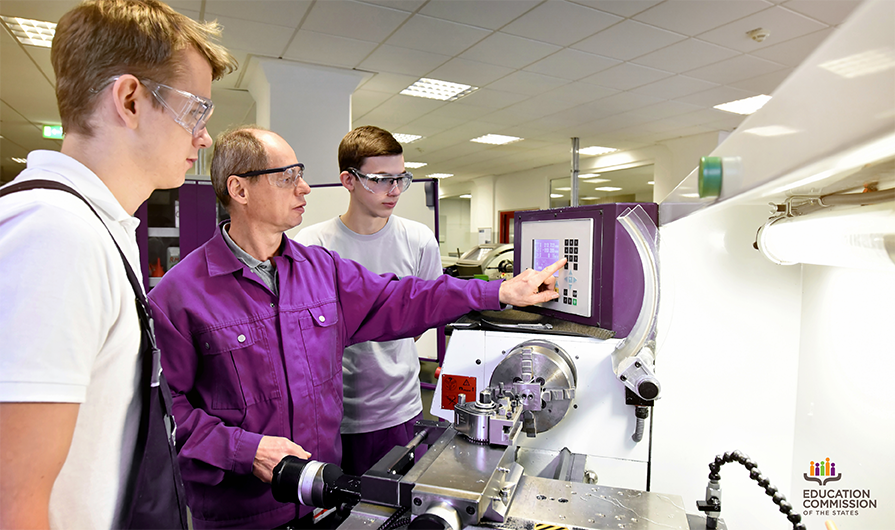This guest post comes from Austin Estes, policy associate at Advance CTE.
Now two years after Congress passed the Every Student Succeeds Act (ESSA), a picture of how states plan to implement the law is coming into focus. And while career readiness is finally getting the attention and priority it deserves, much of the work has just begun.
In an analysis of all 51 state plans, Advance CTE and Education Strategy Group found that 49 states include at least one strategy to expand career readiness in their ESSA plans. Of these, 35 include a career-focused measure in their high school accountability rating system, and another seven states said that they would include a measure in their public reporting system or explore such measures in the future. Further, 36 states reinforce the idea that a well-rounded education should include, and that federal funds should be used locally to support, career readiness through Title IV under ESSA.
This is a significant shift in the way states prioritize the often-forgotten “C” in college and career readiness, but there are still more ways to maximize the opportunities under ESSA to sustain momentum around career readiness. For example, ESSA allows states to set aside funds under Title II, Part A — a program designed to support effective instructors and leaders — to train teachers and school administrators to integrate academic and technical instruction and use labor market data in the classroom. While only seven states specified that they would use Title II funding to support career readiness activities, many state plans left room in the future to provide further professional development and supports.
Another critical missed opportunity lies within the student support and academic enrichment grants under Title IV, Part A, which allows states to distribute grants to local education agencies to strengthen and expand delivery of a well-rounded education. While some states made explicit efforts to prioritize career readiness, many left it up to local education agencies. These states can still promote career readiness under Title IV by developing technical assistance and supports, communicating to local education agencies how local funds could be used to strengthen career technical education and career readiness programs, and designing the local needs assessment process in such a way that elevates the importance of career readiness within a well-rounded education.
Additionally, there are several opportunities to advance career readiness through ESSA implementation, including:
- Reviewing gaps in access to and participation in high-quality career pathways, and offering resources and assistance to close those gaps.
- Ensuring that equitable provision of career pathways is a key component of any needs assessment or comprehensive plan.
- Providing professional development to better integrate academic and technical content.
- Establishing business rules to ensure the high-quality measurement and collection of career readiness data.
- Expanding the public reporting of college and career readiness measures.
- Deepening focus on student transitions through school improvement and student support funding streams.
ESSA may prove to be a catalyst that supports and even accelerates state efforts to dramatically increase the number of students graduating high school prepared for meaningful, sustainable careers. But to achieve that vision, states must follow through and expand on the commitments they made in their ESSA plans.






